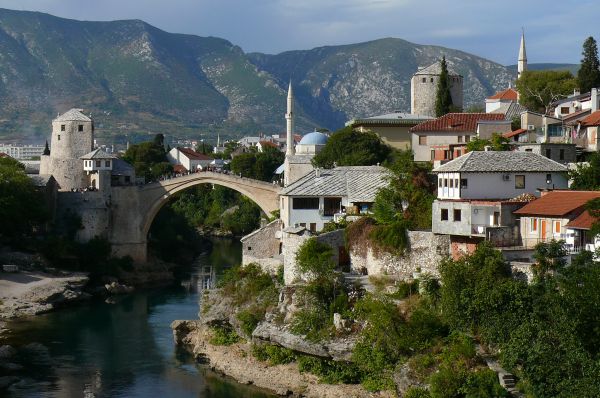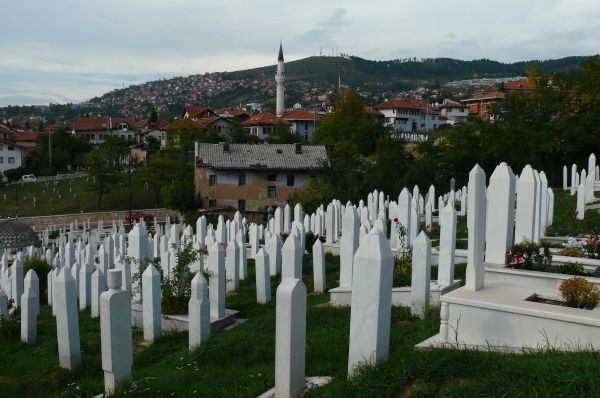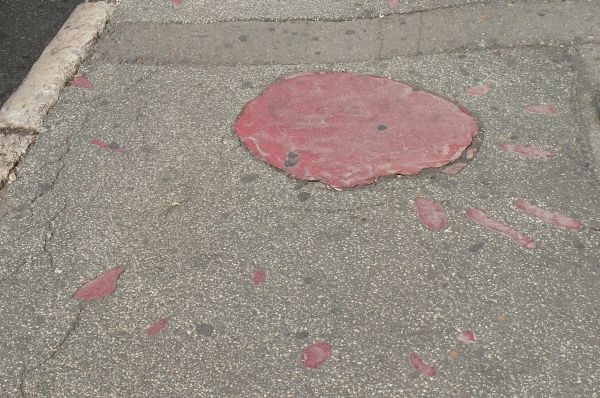This is a guest post from Kami Napora. Kami is a Polish girl who tries to balance full-time work with a love of travel. She spends every free moment exploring new places or returning to old ones. She’s already visited 43 countries, but new adventures are still ahead, with Morocco and Canada trips just around the corner. You can follow her travels on her website, www.wanderlust.pl, on her Facebook page or on Twitter.
Bosnia-Herzegovina has been on my bucket list for couple of years. I knew other Balkan countries, mostly Croatia, Slovenia and Montenegro, are much more appealing but it was Bosnia-Herzegovina that has been always in my mind. I couldn’t even explain this fascination – it just was that way. I could clearly picture myself wandering streets of Sarajevo or staring in delight at the breathtaking scenery of Mostar. But I didn’t really prepare myself for what I was about to see.
I finally managed to visit in September 2012, squeezing only two cities to my short Balkan trip: Mostar and Sarajevo. The weather was lovely, there were not that many people around, the life was slowly going on… but something was wrong and I couldn’t really focus on jolly sightseeing. The ghosts of past events were surrounding and haunting me…
Bosnia -Herzegovina was the most destroyed country in the Balkans War in 1990s. It’s hard to believe what was happening in this beautiful country only 20 years ago, how much these poor people had to suffer. For centuries, both Mostar and Sarajevo were provided as examples of where various nationalities could peacefully and happily live next to each other. None of the inhabitants of this area really expected that things could suddenly change overnight and that friends, neighbors, families would be expected to fight against each other.
The first thing I noticed about Mostar was its incredible beauty. The city, located in the valley of Neretva river and surrounded by mountains, is one of the most picturesque places I’ve ever visited. Here and there, the tall, slim towers of minarets mark their location in the city – and clearly show how the city is divided, which part belongs to Muslim Bosnians and which to Christian Croats. The division of the city was also the reason why it marked its place in the worlds’ history. Mostar was under siege for 18 months, during which the most remarkable moment was the destruction of Stari Most (Old Bridge).
Now the Stari Most, the signature of Mostar, is the most photographed spot in the city and probably in the whole country. But the bridge, that originally dated back to the 16th century and stood in that place for 427 years, was destroyed on November 9, 1993. The structure that is so admired now, the symbol of the city, re-opened on July 23, 2004. The destruction of the old bridge was one of the sad symbols of the Balkan war and it’s still very vivid in the memory of the inhabitants. Inscriptions on the stones around the bridge, saying “Don’t forget ‘93” or murals showing how the bridge was rebuilt remind on the bad times.
But war scars in Mostar are not only seen in the presence of Stari Most. When walking around the city, it’s easy to notice where the war line was. Destroyed houses haunt from the main streets of the city, so many buildings still have bullet holes all over them – and these are almost always on only one side of the road.
Sarajevo, the formal capital of Bosnia -Herzegovina, was in an even more tragic position than Mostar. The city may be less destroyed now but has a lot of hidden scars. During the horrible siege that lasted for almost four years (the longest siege in the world’s history after World War II), 11,514 citizens of the city lost their lives in a very cruel way – i.e. when grocery shopping or waiting for the water supplies. Last April, exactly 20 years after the Bosnian war started, Sarajevo remembered all the victims. Across the main street, in 825 rows, red chairs commemorated every single person that lost the life during the siege. This very view, of the endless red river, showed best how significant the tragedy of Sarajevo was.
Sarajevo might be one of the most beautifully located capitals in Europe. It’s spread on a couple of green hills full of small houses. While it now has around half million residents, it still has a charming, small town atmosphere. But when you look carefully around to these hills you can see there are not only houses and mosques. For such a mid-sized city, Sarajevo has way too many graveyards; you can see some from also every spot in the city. I visited one, next to the Yellow Bastion (a must visit when in Sarajevo, it offers the best views of the city). It gives me chills – every single grave, proudly standing white stone, has the same date of death, between 1992 and 1995. From few pictures young people were looking at me and I couldn’t stop thinking about what they had to go through, how tragic their life was. And all of that only because they happened to live in this very place…
When walking the streets of Sarajevo I could spot here and there red signs in the shape resembling a flower – the famous “Sarajevo roses.” Each of these represents the place where at least one person was killed in a mortar shell’s explosion. The actual holes in the ground that were made by the attacks that later were filled with red paint to commemorate the victim(s). Today, citizens probably try to live normally and don’t pay too much attention to these spots. But I was looking carefully, trying not to step on any of “Sarajevo roses” as they gave me a really uncomfortable feeling. Each day during the siege, an average of 330 shells smashed into the city so there are quite a few places where “Sarajevo roses” can be found.
I loved Bosnia-Herzegovina. It’s a beautiful country that didn’t disappoint me at all and I’m already thinking when I can return there again. I just wish I had prepared myself for that visit so I could deal better with the recent history. But I hadn’t and I’m still trying to understand how such a cruel war could happen in the middle of Europe. Since we still can find its marks on every step we can only hope that the destroyed houses of Mostar or numerous graveyards of Sarajevo will prevent a repeat of history.




